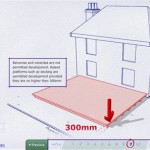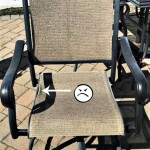How To Get Rid Of Moss On Paver Patio
Moss can be an unsightly nuisance on a paver patio, creating a slippery surface and detracting from the overall aesthetic appeal. While it might seem like a daunting task, removing moss from pavers is achievable with the right approach and tools. This article will provide a comprehensive guide on how to effectively eliminate moss from your paver patio, restoring its beauty and functionality.
1. Understanding Moss Growth
Moss thrives in damp, shady environments, making paver patios susceptible to its growth, especially in areas with poor drainage or limited sunlight. Moss requires moisture and a suitable substrate to flourish. Understanding the factors that contribute to moss growth on pavers is crucial for developing an effective removal strategy.
Moss spores are present in the air, and they can readily attach to pavers, particularly those with porous surfaces. When the conditions are right, these spores germinate and begin to grow. Moss can also spread through fragmentation, where pieces of moss detach and establish new colonies. To effectively address moss growth, it's important to create an environment that is less favorable to its survival. Removing the moisture source and increasing sunlight exposure are key.
2. Preparing for Moss Removal
Before delving into moss removal, it's essential to prepare your paver patio properly. This involves clearing the area, removing debris, and preparing the appropriate cleaning solutions. Consider the following steps:
1.
Clear the area:
Begin by removing any loose debris, such as leaves, twigs, and other organic matter, from the paver patio. This debris can provide a moist environment for moss growth. 2.Remove furniture and plants:
Move any furniture, potted plants, or other items from the paver patio. This ensures access to all affected areas and prevents accidental damage. 3.Prepare cleaning solutions:
Gather the necessary cleaning solutions for moss removal. Common options include vinegar, baking soda, and commercially available moss killers. Choose the solution that best suits your needs and the severity of the moss infestation.3. Effective Moss Removal Techniques
With the patio prepared, you can begin the moss removal process. There are several methods available, each with its benefits and drawbacks. Here are some proven techniques:
3.1. Manual Scrubbing
Manual scrubbing is an effective method for removing moss from pavers. It involves physically removing the moss using a brush or scraper. Choose a stiff-bristled brush or a stiff scraper for this purpose. Use a gentle scrubbing motion to remove the moss without damaging the pavers.
For stubborn moss, you can use a pressure washer with a low-pressure setting. However, be cautious not to use too much pressure, as it can damage the pavers. Always test the pressure washer on a small, inconspicuous area before applying it to the entire patio.
3.2. Vinegar Solution
Vinegar is a natural and effective moss killer. It contains acetic acid, which breaks down the cell walls of moss, leading to its death. Dilute white vinegar with water in a ratio of 1:1 and pour it over the moss-infested areas. Let it sit for at least 30 minutes before scrubbing it away. Repeat the process as needed until the moss is completely removed.
3.3. Baking Soda Solution
Baking soda is another natural option for moss removal. Create a paste by mixing baking soda with water and apply it to the moss. Let it sit for 30 minutes before scrubbing it off with a stiff brush. Baking soda is effective in removing moss and also helps to neutralize the pH of the pavers.
3.4. Commercial Moss Killers
Commercial moss killers are readily available and offer quick and efficient moss removal. These products typically contain chemicals that quickly eliminate moss, but it's essential to follow the manufacturer's instructions carefully. Always wear appropriate protective gear, such as gloves, goggles, and a face mask, when using commercial moss killers.
4. Preventing Moss Growth
After removing the moss, it's crucial to take preventive measures to minimize its recurrence. Here are some effective strategies:
1.
Improve drainage:
Ensure proper drainage to prevent water from pooling on the paver patio. This can be achieved by adjusting the slope of the patio or adding drainage channels. 2.Increase sunlight exposure:
Trim overhanging branches or shrubs that block sunlight from reaching the patio. Sunlight inhibits moss growth. 3.Regular cleaning:
Regularly sweep or clean the paver patio to remove debris and prevent moisture build-up. 4.Apply moss killer preventatively:
Consider applying a moss killer preventively, especially in areas prone to moss growth. This can help to prevent moss from re-establishing itself.By following these steps, you can effectively eliminate moss from your paver patio and prevent its recurrence. Remember, consistent maintenance and a proactive approach are crucial for maintaining a beautiful and functional outdoor space.

How To Get Rid Of Moss From Pavers Dm Outdoor Living Spaces

How To Get Rid Of Moss Effectively Without Damaging Your Paving Express Co

Guide To Removing Moss Between Your Brick Pavers

How To Kill And Prevent Sidewalk Patio Moss

Remove Algae And Lichen Off Patio Pavers Like Rick Wet Forget Blog

How To Clean Your Patio And Kill Moss Red

How To Remove Moss From Pavers Houserituals Com

How To Remove Moss From Paving And Concrete Without A Pressure Washer Or Scrubbing Express Co

How To Kill And Prevent Sidewalk Patio Moss

Get Rid Of Patio Moss The Paver Savers Northampton Pa
See Also








